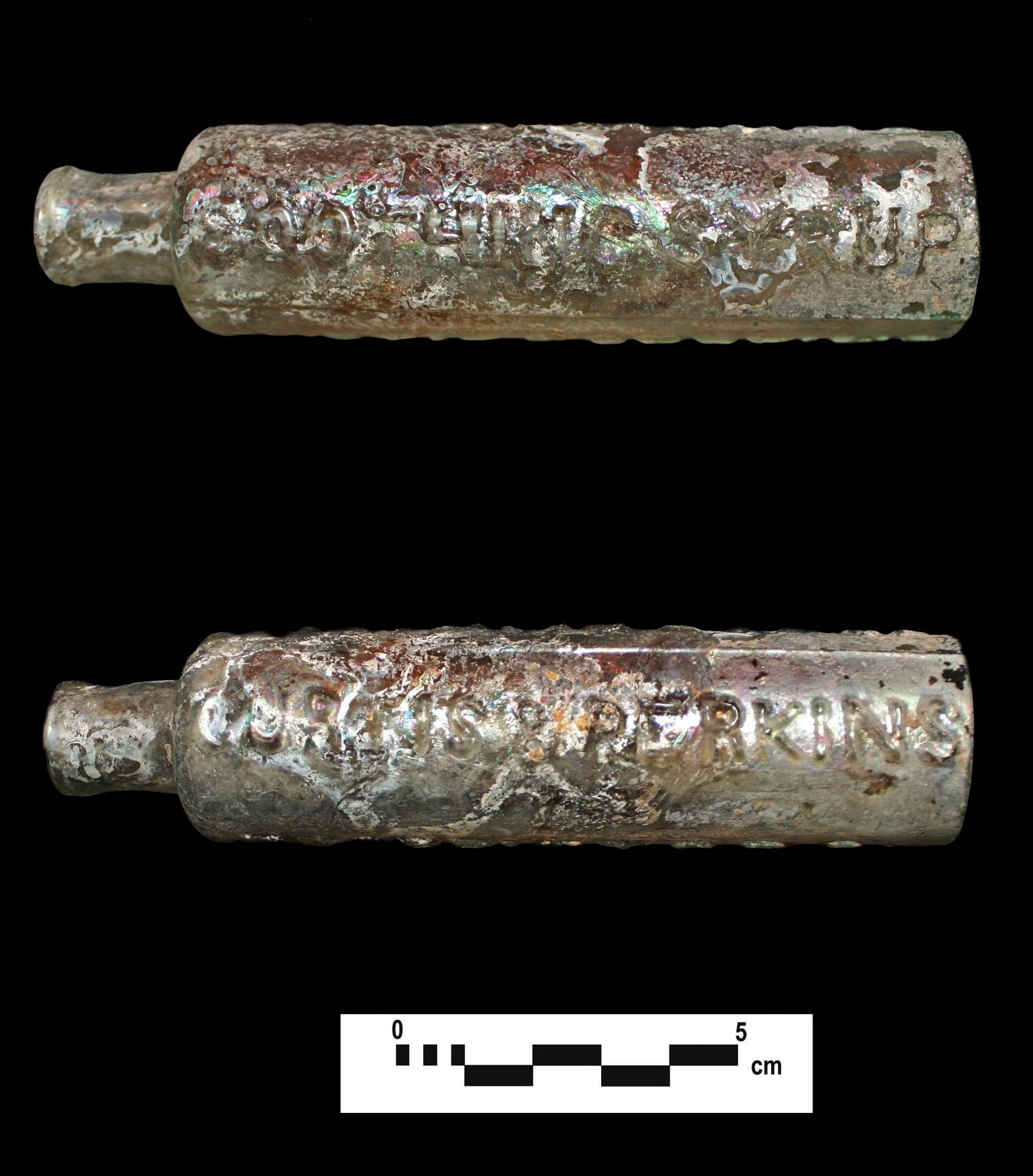In honour of Mother’s Day, we thought we would show a few artifacts that are known examples of mothering in Canadian history.
Juvenile Vessel

The first artifact is an example of a juvenile vessel fragment from the Dunsmore Site; a mid-to-late fifteenth century ancestral Iroquoian village site found in Simcoe County. Archaeologists call these finds ‘juvenile vessels’ because they are attempts at pot-making by children – a learning process involving children partaking in adult activities. We know through the historic records that women, and specifically mothers, aunts and grandmothers, were the ones that taught children to make vessels. In general, juvenile ceramic assemblages include a great variety of decorative motifs and techniques. You can see in the fragment that, based on the pot manufacture and decoration, young potters tended to copy adult pot styles. In some cases, even distinct types can be recognized among juvenile vessels.
Small versions of ceramics were made by young girls that imitate the style of the full size pots. When a young woman became more skilled at pottery, she would make smaller pots first, and eventually make the impressive full size pots that her elders made.
Mrs. Winslow’s Soothing Syrup

This artifact was found at the site of Bishop’s Block in downtown Toronto. It is a historic remedy known as “Mrs. Winslow’s Soothing Syrup”. Between 1835 and 1900, MWSS was a well known, widely distributed and effective treatment for infant teething pain, due to the large percentage of morphine and alcohol contained in the syrup (Scharfenberger 2009:25). Patent medicine makers took advantage of the challenges new mothers face by making a “miraculous” potion for calming a crying baby. The bottle also contains the words Curtis & Perkins, Proprietors, for the manufacturers and traders of the famous ‘medicine’ were Jeremiah Curtis and Benjamin Perkins of Bangor, Maine. Mrs. Winslow was Curtis’ mother-in-law and the two began bottling the syrup in 1849 (Cannon 2013).
In 1911, the American Medical Association published a volume entitled “Nostrums And Quackery”. Mrs. Winslow’s Soothing Syrup can be found under the section entitled “Baby Killers” (Cramp 1911).
“Think Of Me” Teacup

The last artifact for our Mother’s Day series is a late-nineteenth century child’s teacup fragment, also recovered from the Bishop’s Block site in downtown Toronto. The small teacup is decorated with gilt band at the rim (extending over the lip to the interior) and has a hand painted branch with flowers (brown branch, green leaves, red flowers, grey accents). The most important aspect of this item is the gilded cursive writing under the branches which reads “_k of me”. It most likely read “think of me”, which suggests it was given as a gift and has a sentimental purpose. This item was in all probability given to a child, perhaps from their mother or grandmother.









